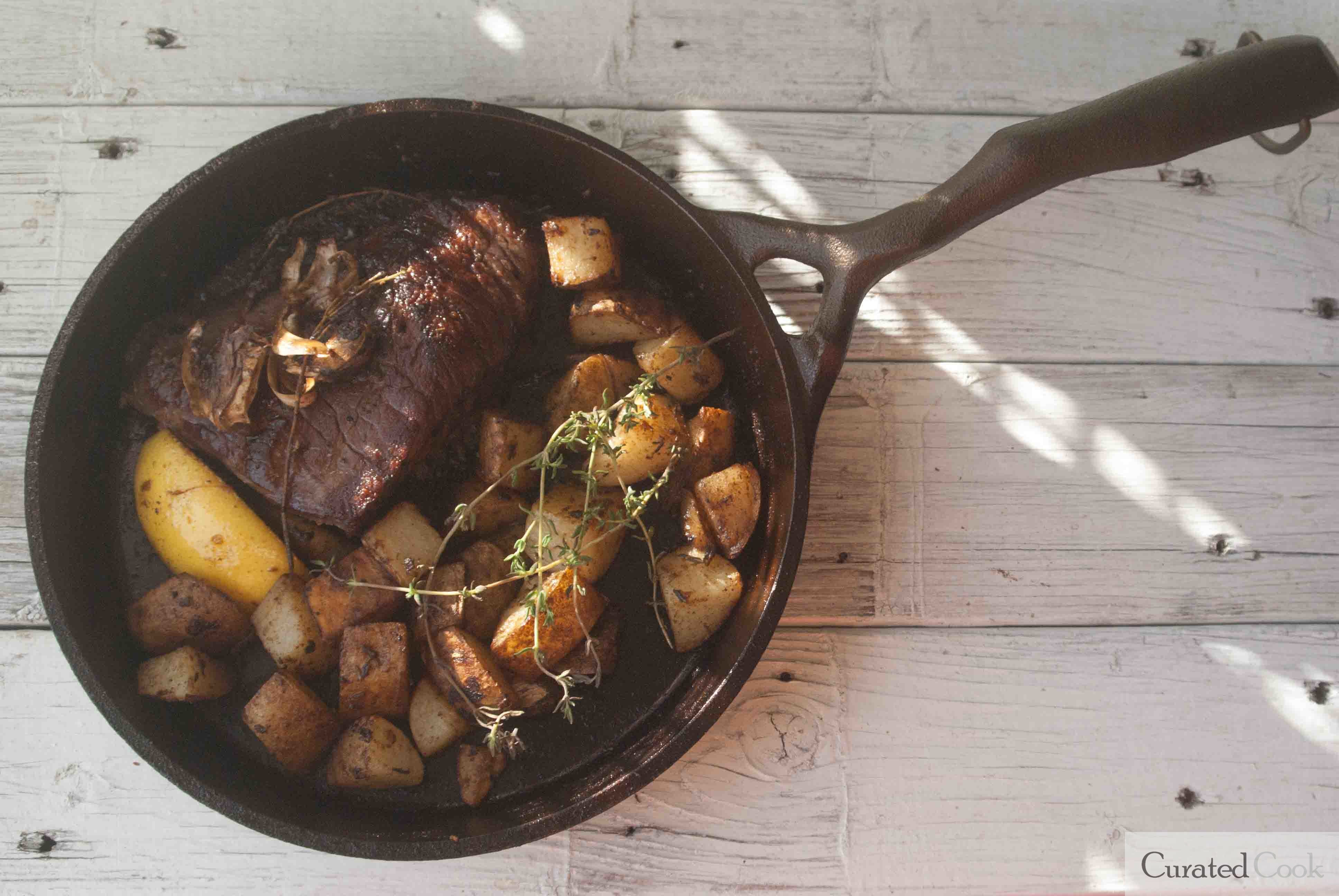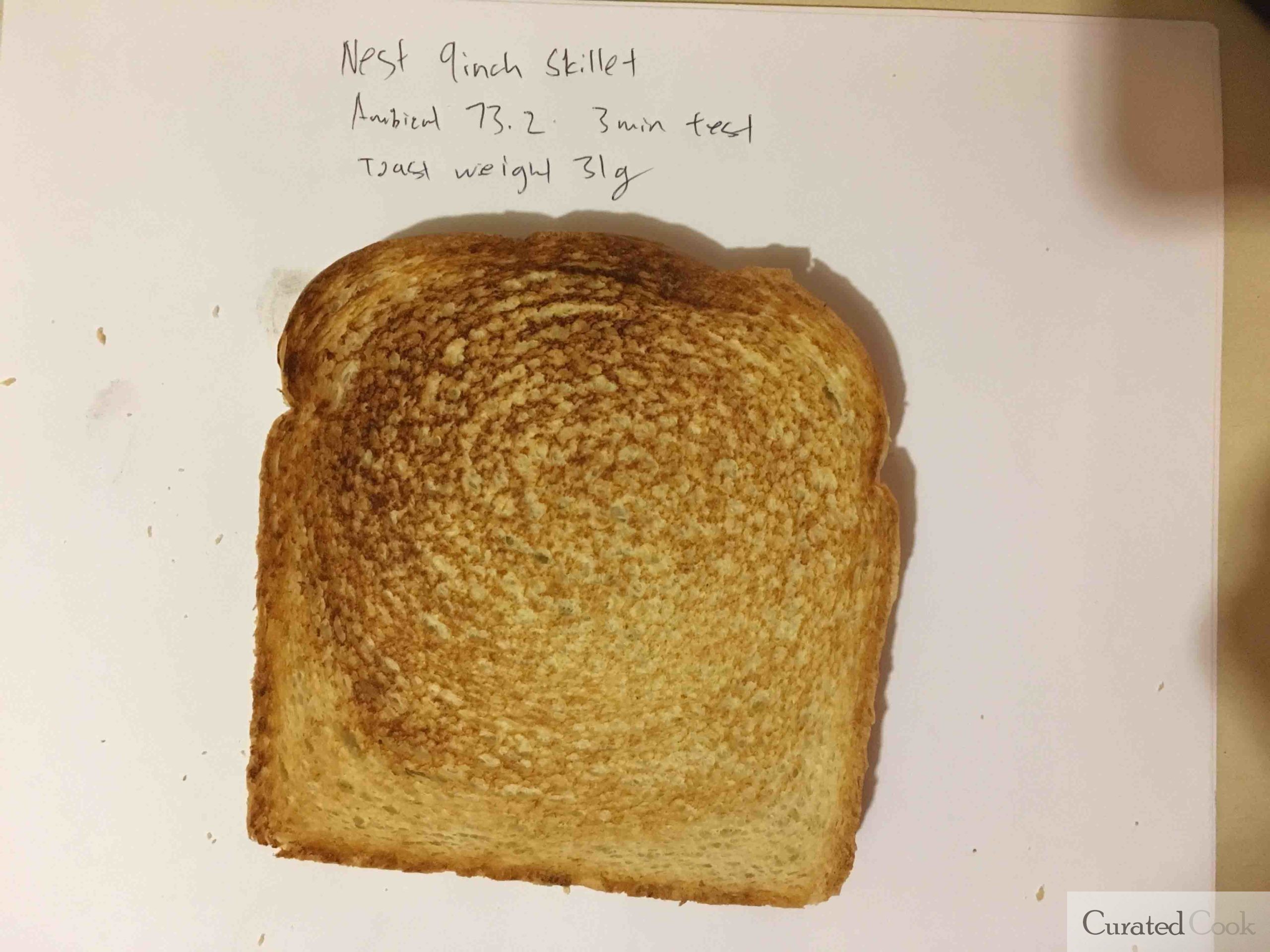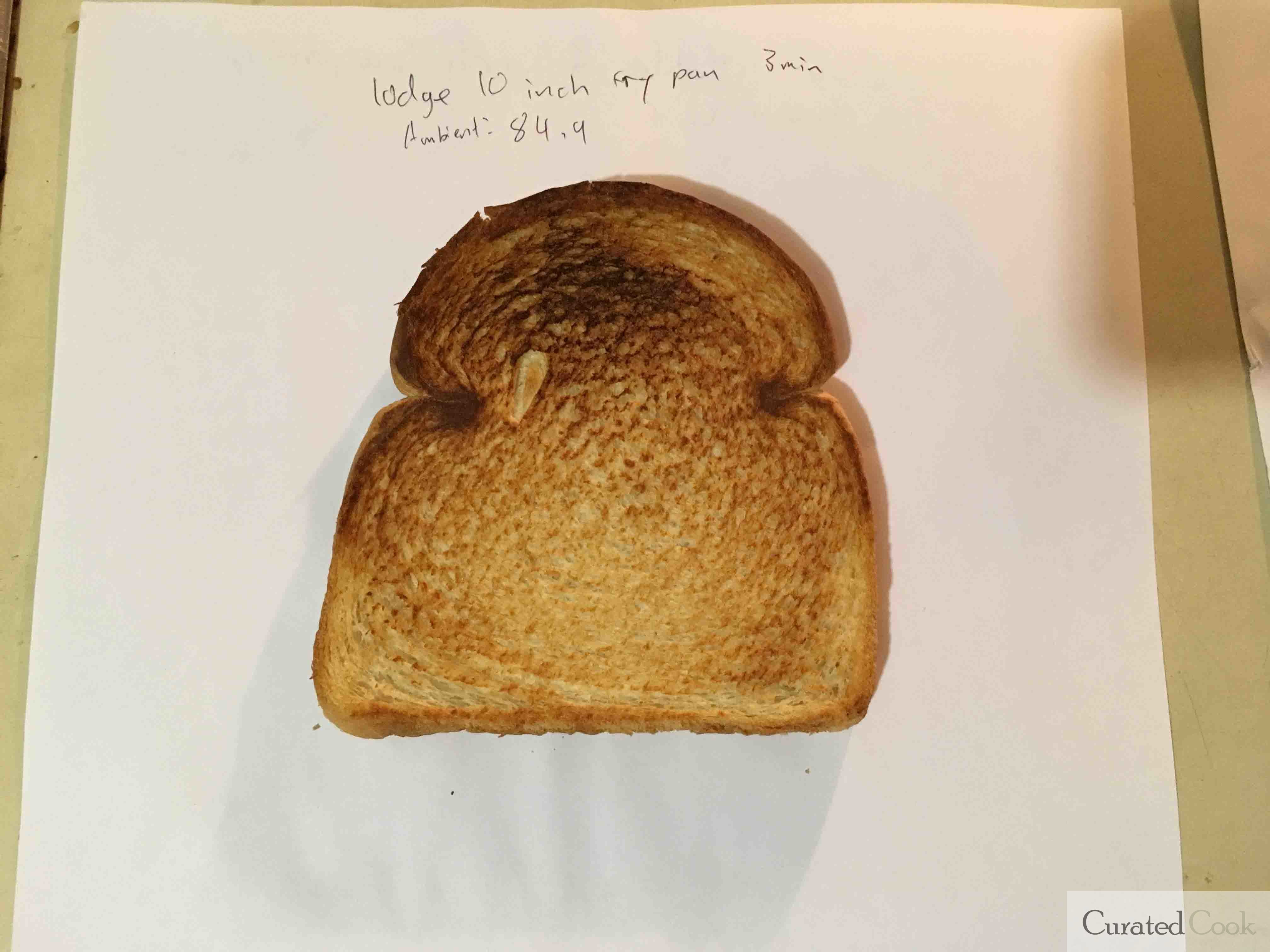Making purchases at Amazon.com and other website funds this website by generating revenue. Any help is appreciated and supports both me and content like this.
Nest Cast Iron Skillet Review
Nest is a relatively new company that got some of their funding via kickstarter. They produce a number of home products such as furniture and cookware. Nest Cast Iron cookware seems to replicate the smooth interior cooking surface that is coveted so much these day. For the most part, it just seems like a regular cast iron skillet with a few tweaks that makes it look nice. We will be going through the design thought process and do a performance test to see how well it performs.
T Fal Professional Non Stick Cookware Set Quick Summary
| Categories |  |
|---|---|
| Performance | Great |
| Compatibility | Gas, Electric, Halogen, Glass Top, Induction |
| Colors | Bronze/td> |
| Warranty | Life Time Warranty |
| Brand Awareness | Start Up |
| Country of Manufacturer | America |
| Thoughts | A surpising performance by Nest Cast Iron Skillet. The heat distribution was better than Lodge and Le Creuset. However, there is no pouring lips to drain liquid. All in all, its a great looking skillet. Whether the price is worth it is dependent on you. |
| Reviewed Cookware | Nest Home Fry Pan |
Is a smooth cast iron surface more nonstick?

Probably. The reason why a smooth surface is considered more nonstick is because there is less of a rough edge for food to latch on. Roughing a surface is a technique often used prior to adhering two object together. For example, house painter who wants their work to last more than a year, will sand the surface of the house. They do this before applying primer to promote adhesion between the wood and the primer. The same applies to automotive paint, there is a lot of prep work that is involved in painting a car. The reason why you see some cars with flaking paint is because there was improper prep work done before painting.
Given the reason why a rough surface promotes adhesion, most would assume that a smooth surface will always be more nonstick. This is true when you are bonding metal to the food. However, the main reason why cast iron pans are nonstick is because of the seasoning not the texture of the cast iron surface. If you think about it, the main goal is to actually build up as much seasoning as possible. In order to promote more adhesion with the seasoning, you would need a rough surface like the pans that lodge make.
Some of you might argue that a smooth surface cast iron pan is more nonstick than a modern day cast iron pan. This might be true for your particular situation. But are the two pans equivalent in the amount of seasoning that it has developed?
Losing Cast Iron Seasoning
Lets assume that the smooth cast iron pan is more nonstick. Overall, as long as you maintain the seasoning it will always beat out the rough surface cast iron pan, in terms of nonstick performance. The fact still remains, that the seasoning will not bond as well to a rough surface. Once you lose the seasoning, the nonstick performance is gone. Given how most people improperly clean and rough up the cast iron pan, a pan with better seasoning adhesion is probably better. Only people who are cast iron cookware enthusiast will properly care for that pan. For your average day users, the seasoning that comes from the factory will be lost in a few days.
My particular experience with this Nest Cast Iron Skillet was that the seasoning ripped off. This happened when I was searing the steak. I tried to flip it and was unable to do so, I had to hold down the pan and lift the steak. The end result was a bald spot where the seasoning was.
Nest Cast Iron Skillet Design
Nest Twig Handle
The handle on these pans are certainly the most striking feature about this pan. At first glance, it looks like it was done just to make it look pretty. But after gripping it, you can feel that effort in ergonomic was placed in making the handle. The divot on the left side of the handle is meant for your thumb. The raised corner on the right lets your index and middle figure rest between it. Overall, it feels really comfortable when holding. With that being said, if you hold the handle at a wrong angle, it feels downright odd. It is designed to be only held a certain way. Once you change that, it feels really weird. Left handed people will probably find this handle to be uncomfortable.
On the base of the handle, there is a Y shape to allow more heat to dissipate from the handle. In general, this aids in the reducing the amount of heat that is transferred to the handle. I still recommend always using a glove or towel when griping the handle. An accident can happen very easily with a metal handle.
Near the end, they have a beautiful bronze loop handle. If you hang the skillet face down toward the surface, you should have no problem. Hanging it backwards is a different story, the end of the handle gets in the way. The loop barely clears the end of the handle. This is great for manufacturer though, this force you to display the companies logo.
Surface Finish of Nest Cast Iron Skillet
The pan has a mixture of rough and smooth surface. As stated before, the interior of the pan has a smooth surface in an attempt to provide a more nonstick performance. Whether you think that feature is important is up to you. The pebble exterior on the rest of the pan is nice though, it gives a rustic feel that is in alignment with the aesthetic of the pan.
Shape
Nest castiron skillet has a very basic shape with an almost vertical sidewall. I will argue that their skillet is more of a sauté pan than a frying pan. You might have some difficulty flipping food due to the relatively high sidewall. On the other hand, this shape is great for braising food.
Although this is a relatively small pan, it has an ample amount of flat cooking surface (7.8 inch).
There is no pouring lip anywhere, when you pour sauces or juices it needs to be done quickly. The liquid will splatter everywhere otherwise.
Nest Cast Iron Skillet Thickness
Nest Cast Iron Skillet has a sidewall thickness of 3.84 mm. This is in line with most other manufacturer. In general, you do not want a cast iron skillet with a thin sidewall. Since cast iron already a poor conductor of heat, making it thinner will on exacerbate the heat spot issue.
Secondly, you want a thicker/heavier pan. One of the reasons why these pans are so great is because it can sear food really well. A thin light pan will not have the ability to do so. If you have a light cast iron pan, food will probably steam instead of sear.
Fit and Finish
In general Nest Cast Iron Skillet is really well made. It is finished in what I believe is flax seed oil, hence the brown color. Overtime though, I believe it will turn black. The pebble exterior and rustic design flows beautifully in this pan. The only issue that I see is the obvious deburring on the handle. It looks off if you inspect it closely.
Specs
Note:These measurement are done by me with the tools that I have on hand. The manufacturers have their own measurement guidelines and that should be assumed to be accurate. What I find on this review can vary widely due to several factors, such as ambient temperature, location, water, tool calibration, stove btu, etc..and should only be considered as my opinion.
Weight:2156 g
Diameter: Around 9 inch
Cooking Surface Diameter: Around 7.8 inch
Height: Around 1.7 inch
Performance
To test the how well it distribute heat and how well it heats up, I perform a toast test where I place a piece of toast in the center than weight it down with a meat pounder. I heat up the pan for a total of 3 min then see the color of the toast.

I am really impressed by the performance from Nest cast iron skillet. In my opinion, it is superior to both Le Creuset and Lodge. It distributed the heat more evenly than both Le Creuset and Lodge. Although lodge did get hot a little faster, it was not as uniform in terms of browning compared to Nest. In terms of heat distribution for a cast iron skillet, this is the best one I ever tested. Below, you will see the test from the same test I did on Le Creuset Skillet.

Le Creuset has a huge heat spot issue especially on the bottom portion of the toast. That part was hardly browned at all. The speed of which the pan heat up was also slightly inferior.
Looking at the Lodge skillet, we see the same heat spot issue but lodge performed better in terms of heating up. It is slightly more dark than Nest Skillet.

Conclusion
The performance of this pan is amazing for cast iron. I never would have expected how well it distributed the heat. It still take a while for it to heat up but that is inherent with cast iron pans.
The pan looks beautifully well made and it should get praise from anyone who sees the pan. Given all that, Nest Cookware is still pretty pricey at 155. Especially compared to a pan by Lodge which usually run less than 20 dollars. Which one is better is dependent on you, both are made in USA.
I hope you like thisNest Cast Iron Skillet Review, If you would like to see more, please visit our Pots and Pans Review page.

Rick Keebler
November 15, 2024 at 11:13 amBUYER BEWARE!!!! This company should not be trusted to deliver products that have been paid for. They ran a Kickstarter campaign to get this company off the ground and received over $93,000. However, they did not deliver on the promised items to the backers of that campaign—that was over six years ago! Many attempts have been made to get the promised products, but Nest Homeware has failed to deliver them.
https://www.kickstarter.com/projects/316054273/nest-homeware-cast-iron-12-braising-pan?ref=nav_search&result=project&term=nest%20homeware&total_hits=2
Jacinta
January 13, 2025 at 10:01 pmYes! I saw this complaint several years ago. Amazingly, disgustingly, it appears many still haven’t received their pans.
Given how long the Nest pans have been available at retail this is deeply disturbing. Additionally, Matt Cavallaro, the Kickstarter creator for the Nest project, vastly under estimated shipping fees, which he subsequently billed, despite the ‘rewards’ bundles not actually being shipped to many of those backers. Yeahhh, shipping fees collected for stuff that has never been shipped! It’s just another level of disgusting.
I’ve seen Matthew Cavallaro’s responses online where he whines, cries, kvetches & wrings his hands, all while ignoring that he’s most assuredly not the victim in this mess. I suspect he’s been careful to ship out a few here, a few there, just to avoid the appearance of being a total scam.
Ftr, people were initially projected to receive their pans in Dec 2018. At least one person paid $700. Others have paid $600+. Just an all around ugly situation.
Note, among those who have received them, there are reports of receiving ‘seconds’ quality. *smdh* Matt Cavallaro is a truly special piece of work.
I just hope karma yanks him by the beard someday soon, & hard, very hard.
Before I knew of the Kickstarter campaign, I bought a couple of Nest pans retail at a strip discount of 40 or 50% off with free shipping. I suspect I got a better price than those who participated in the Kickstarter campaign AND I actually have the pans I paid for! But then, mine needed to be shipped, or I would have been able to initiate a credit card charge back & quickly, easily, recovered my money.
The Nest pans I received are beautiful. They work fine. Regardless, it galls me that I helped enrich a lying, scheming, scammer who took innocent supporters money offering many of them, possibly most of them, little but lies & excuses.
The information here is easily confirmed from the comments made by backers for the Nest cast iron cookware campaign. I also reviewed comments left for multiple other Kickstarter campaigns for cast iron cookware & none of em compare to the Nest situation. Nor did they seek, & collect, as much money.
Alizabeth Longshore
May 7, 2025 at 8:34 pmSoooo glad I found this. I’m obsessed with how gorgeous these pans are and was so disheartened because I thought they’d just “gone under” especially since COVID, but knowing it was just a big ole hoax and terrible plan makes me feel better about looking for something else and not holding out hope I’d hear back from them